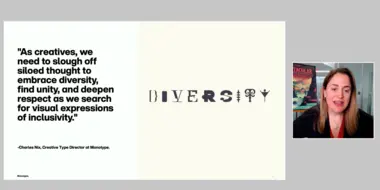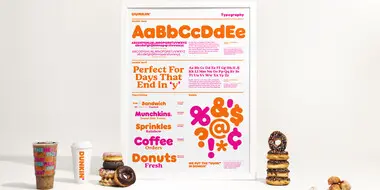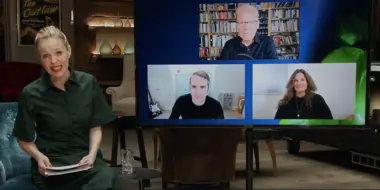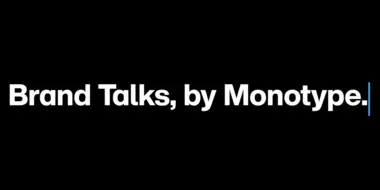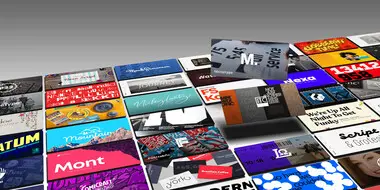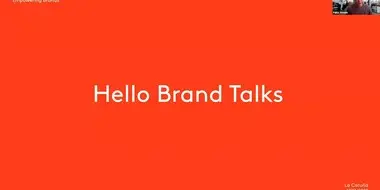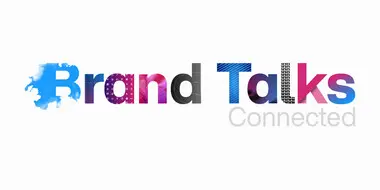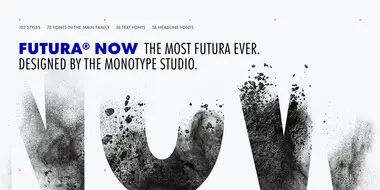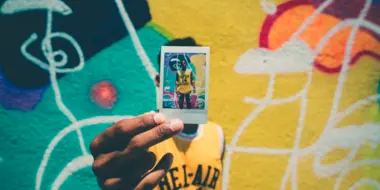
Digital branding
Nostalgia has been a growing theme since the pandemic hit more than two years ago. In chaos, people crave comfort, familiarity, and experiences that remind them of simpler times. We’ve written previously about how nostalgia is reflected in the development and use of typography in branding. However, nostalgia is also having a moment across nearly all sectors of human life: in fashion, in consumer products, and yes, even in Hollywood.
Alice Palmer, SVP Marketing, Monotype kicks off Brand Talks in March 2022.
Monotype and Lippincott partnered up to create a bold, inclusive new identity for NYC Pride, the marquee event held every year by Heritage of Pride, one of the most iconic, enduring LGBTQIA+ organizations in the country.
Over the past year or two, nostalgia has become a fixture in design of all kinds: typography, fashion, furniture and beyond. We take a look at the complex relationship between reviving heritage design elements and the history they come from.
In a recent episode of our Creative Characters podcast, the conversation centered around how the futures we envision aren’t always practical for the reality we live in – both in sci-fi films and fonts in car dashboards.
Elizabeth Ann Clark, Chief Creative Officer at virtual reality studio, AEXLAB, talks about the power of VR in social contexts, some of her favorite design tools, and how her team came to select a student-designed typeface for the face of their flagship game.
Creative Type Director, Phil Garnham, spoke with the Economist in May about the impact the pandemic has had on typography. With such an unprecedented year we’ve had, Phil uncovers how this period has evolved fonts to become friendlier to their audiences.
In this panel at the 2021 ADC Festival, Monotype’s Creative Type Director, Phil Garnham, is joined by KMS’ Jessica Krier and Journalist Jürgen Siebert. The group discusses the future of type with variable fonts and how they offer endless possibilities for creatives. They also raise questions about brand durability and expansion that variable fonts can enable - as well as simplifying its technical complexity.
After years of raising awareness and understanding around mental health, the time had come for charity Mind to update its iconic visual identity. Monotype Studio developed Mind Meridian – a modified typeface that puts warmth and accessibility at the heart of the brand.
Monotype’s Creative Type Director Phil Garnham, is joined by O₂ and their brand agency to discuss O₂’s new custom typeface, with an in-depth look at how this has propelled O2 to become a more digital and contemporary brand throughout different markets.
Brand Talks Connected delivers Monotype’s popular Brand Talks event series directly to wherever it is you’re working these days. Here’s a look back at some of the amazing content from 2020. We hope you’ll join us for the next event!
Kevin Laurino, Manager of Art & Print Production, Retouching, and Finishing at Netflix, shares some experiences from his career-long relationship with fonts and how to tame the beast that is managing a brand’s font licensing. Here are some tips to help get you started.
Artists pour their heart and soul into their craft and creations and in an ideal world, every artist would be recognized and paid appropriately for their efforts. In reality, however, artists often have to fight for their rights to be upheld. This has been true for centuries and is only intensifying in the digital era.
Pablo Amade, Creative Director for SUMMA Branding, presents his Correos case study at Brand Talks Connected – EMEA on November 18, 2020.
Brand Talks Connected delivers Monotype’s popular Brand Talks event series directly to wherever it is you’re working these days. We hope you’ll join us for the next virtual event.
Modern retail brands find themselves in an era of unprecedented disruption. Here are five ways fonts can strengthen your brand and customer experience.
In light of breathing new life into typographic icons, the Monotype Studio would like to invite you to learn first-hand about a definitive version of a beloved font family that will offer designers a chance to see a classic with fresh eyes.
The contemporary version of this versatile family organizes and makes cohesive 90 years of one of the most popular typefaces of all times. It’s more true to the original than any digital version you’ve ever worked with, and brings to life 37 new styles, including a variable version.
It’s difficult to imagine the 20th century without Futura. Released by the Bauer Type Foundry in 1927, Paul Renner’s Futura was a near-instant hit that quickly established itself as an iconic, immovable piece of our shared culture.
